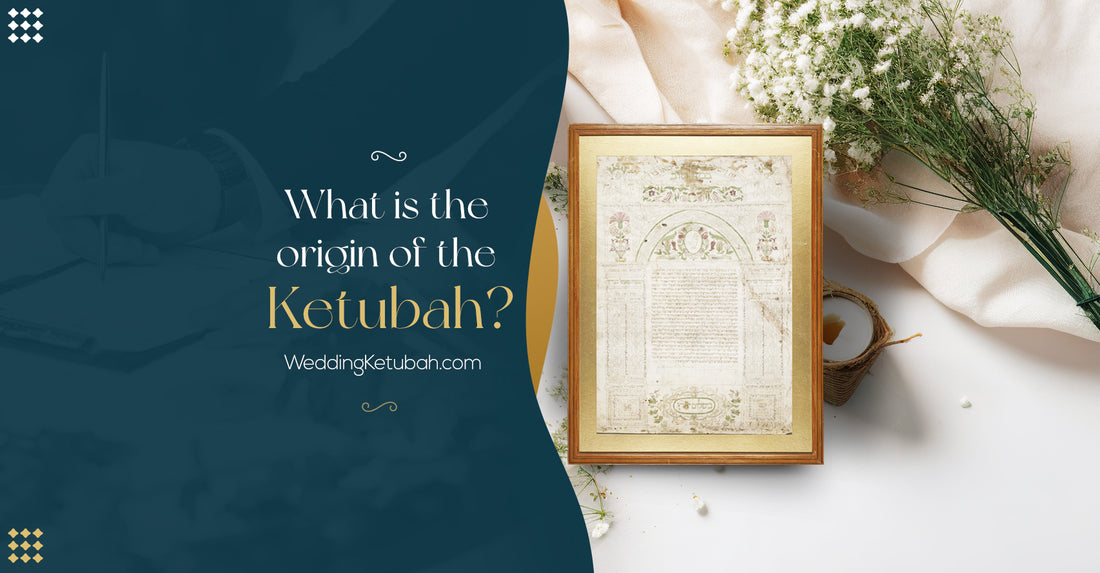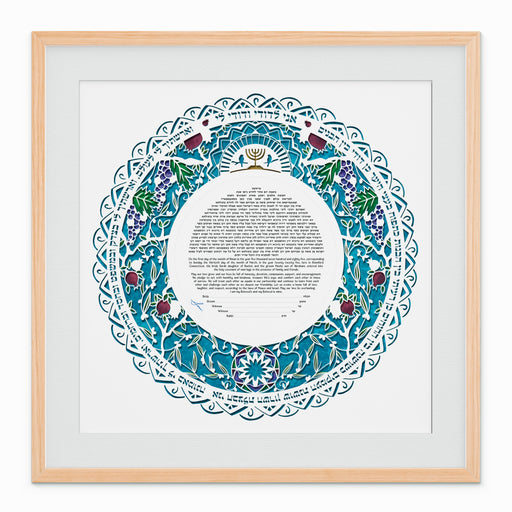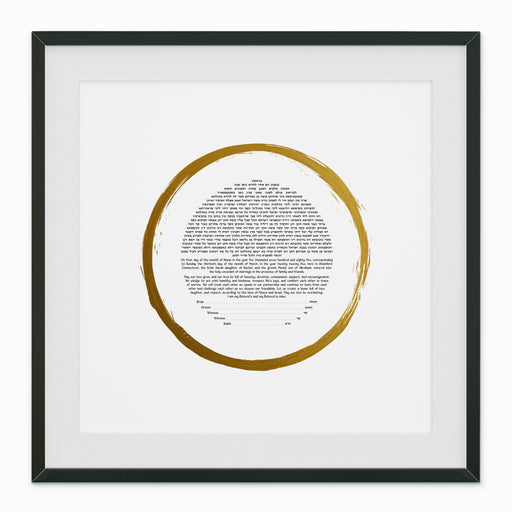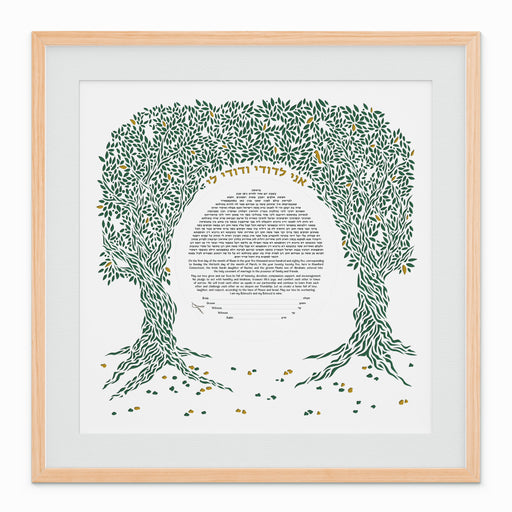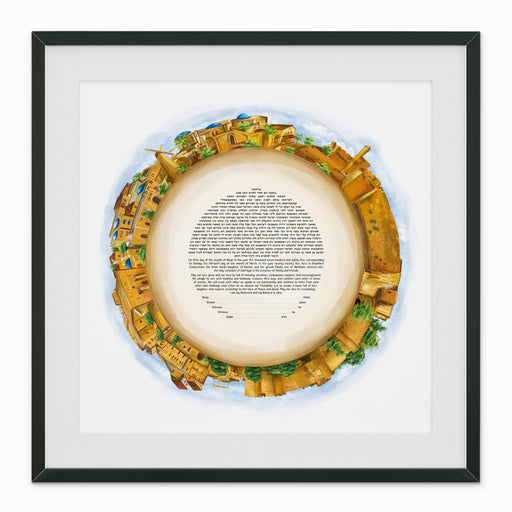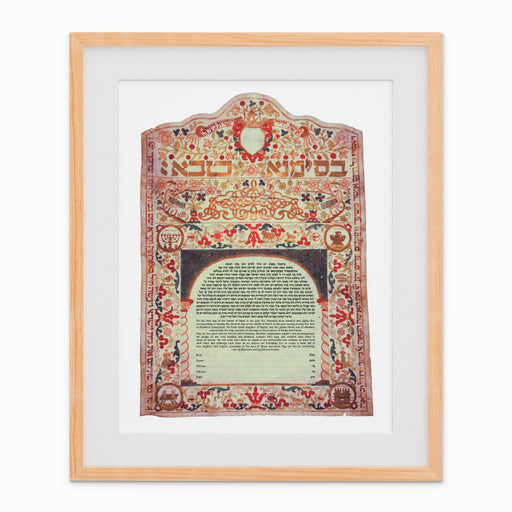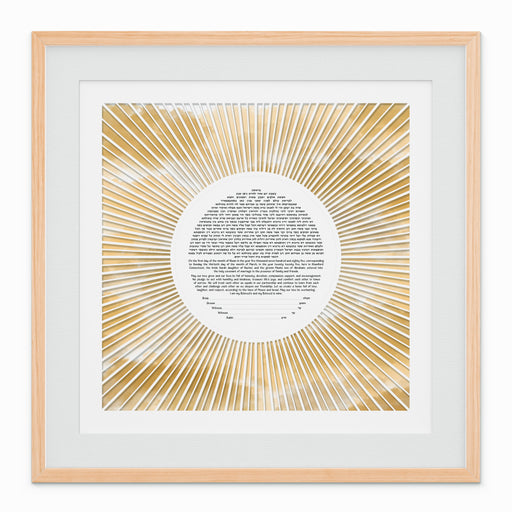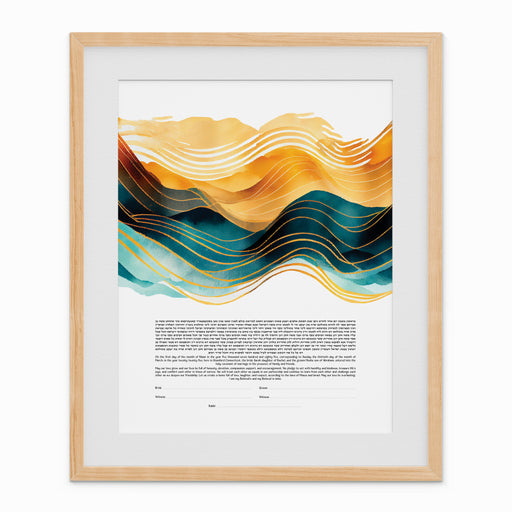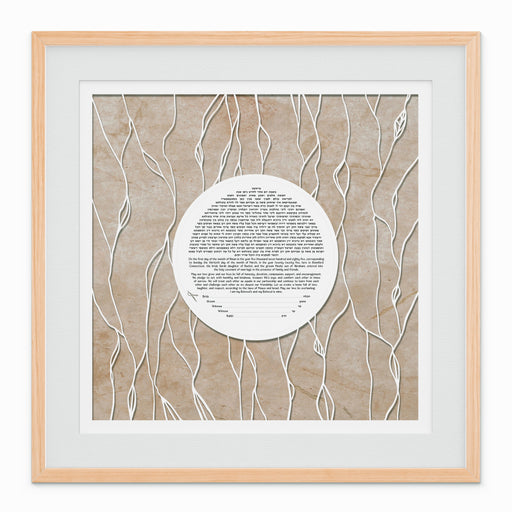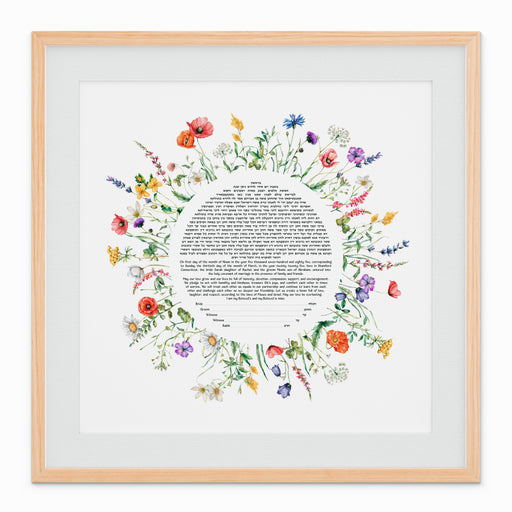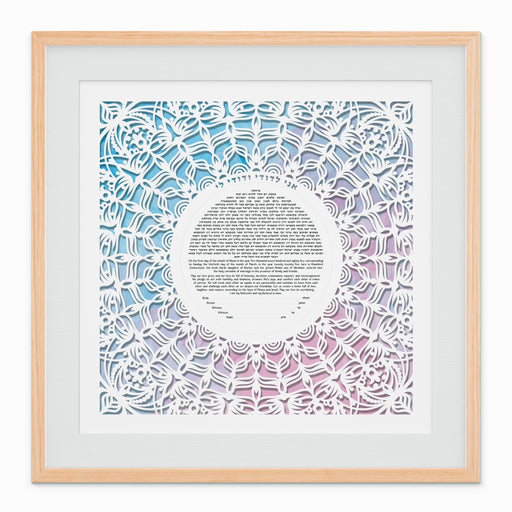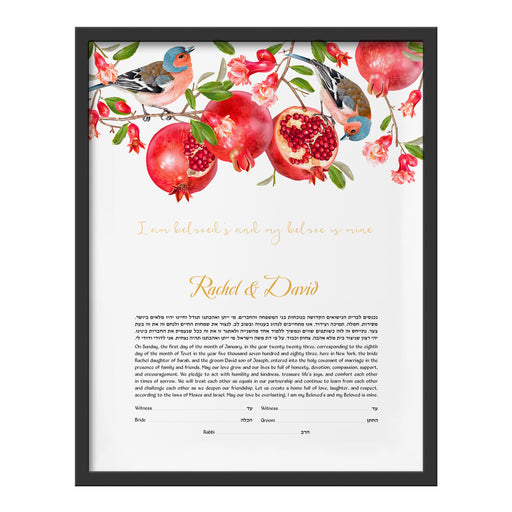Table of Contents:[hide]
By Aviva Gat
A Ketubah is a custom that dates back to ancient times, possibly even before the Torah was written. Read on for an in-depth discussion of the origins of the Ketubah, why it was created, and what it means today.
What is a Ketubah?
A Ketubah is a contract between a man and his wife in which the man accepts his obligations as a husband according to Jewish law and customs.[1] The point of the Ketubah is to protect a woman so that her husband cannot easily divorce her, and if the marriage were to end, the woman would be taken care of.
The Ketubah was created as a legally binding document similar to modern-day prenuptial agreements. The document states what the husband and wife bring to their marriage and what the woman is owed upon divorce or the husband’s death. Traditionally, the husband is obligated to support and provide for his wife and agrees to pay a mohar settlement plus an additional payment should the marriage end. The bride, meanwhile, brings a dowry to support the couple’s new home, however, she is entitled to keep the dowry in full in the case of a divorce.
Learn more about what is a Jewish Ketubah marriage contract here
When did the Ketubah tradition begin?
The Ketubah tradition has evolved throughout history. It began in ancient times when both Jews and gentiles customarily provided payment to a bride’s family upon a betrothal or marriage. It is likely that this was to compensate the bride’s family for the loss of income when losing a contributing member of a household. Over time this evolved to be a payment to the bride upon divorce rather than compensation to her family.
There are several mentions of this type of settlement payment in the Torah, however, the Torah does not require it as a law. According to the earliest Ketubah customs, a man would set aside money for the Ketubah. To protect women from lost or misplaced Ketubah money, the Sanhedrin led by Shimon ben Shetach legislated around 100 BCE that a man’s estate would be mortgaged in the Ketubah. This legislation ensured a woman could collect her Ketubah the same as any other debt. [2]
What was a Ketubah in ancient Hebrew times?
In ancient Hebrew times, the Ketubah was generally an oral agreement rather than a written document. Two witnesses were sufficient to ensure an oral Ketubah was valid. Even up to 360 CE there is some evidence that not all Ketubahs were in writing. However, it later became legislated that a written document was necessary to protect the woman’s rights.
Even in ancient times it was customary to create beautiful artistic Ketubahs on papyrus. Scribes and artists created works of art for couples to keep in their homes as a reminder of their commitment to one another.
What is the oldest Ketubah?
While Ketubahs are referenced in Exodus in the Torah, the oldest known Ketubahs are from the times of the Babylonian exile 586-536 BCE. During this time, women needed to be protected because it wasn’t uncommon for men to leave. Ketubahs also became proof of purity when inter-marriage between Jews and non-Jews increased.[3]
There are also Ketubahs dating to 440 BCE in Egypt written in Aramaic on papyrus. This version is closer to the text that was later finalized by the Sanhedrin about three hundred years later.
Ancient Ketubahs vs. modern day Ketubahs
Today there are multiple different versions of Ketubahs. The most traditional are very similar to the ancient text drafted by the Sanhedrin, while the more modern versions are adapted to today’s customs. For example, ancient Ketubahs are written in Aramaic, which was the vernacular at the time the text was formalized. Today Orthodox Ketubahs are still in Aramaic, but there are also modern Ketubahs in Hebrew, English, or the language of your choice.
It's also important to note that ancient Ketubahs were legally binding documents. Today, unless you are in Israel, Ketubahs are more ceremonial. Civil courts in most countries will not legally enforce the document.
Here is a quick comparison of ancient vs. modern Ketubahs.
|
Ancient Ketubahs |
Modern Ketubahs |
|
Written in Aramaic |
Written in Aramaic, Hebrew, English, or any other language |
|
Binding by Jewish law |
Ceremonial, except in Israel |
|
Focus on customs from ancient times |
Focus on a couple’s love, partnership, and commitment |
|
Usually hand-written by a scribe |
Can be printed or hand-written |
Do you prefer a more modern Ketubah or one resembling the ancient traditional version?
Today’s Ketubah texts vary from traditional to modern. Read a more in-depth overview of Ketubah texts here
[1] Rabbi Aryeh Kaplan (1983). Made in Heaven. Moznaim Publishing Corporation.
[2] Rabbi Aryeh Kaplan (1983). Made in Heaven. Moznaim Publishing Corporation.
[3] Brautman, E. (n.d.). History of Ketubot. http://folkvine.umbc.edu/brautman/history.htm
By Aviva Gat
Aviva Gat is a journalist, author, and content writer specializing in various topics including religion, culture, health, & technology. She has a B.S. in Journalism and Religion from Boston University and an M.B.A. from Tel Aviv University.

